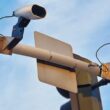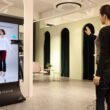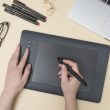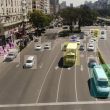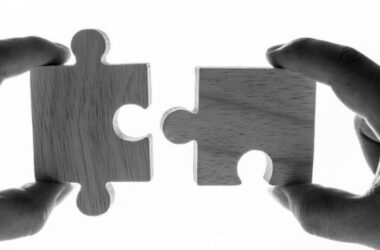Executive Summary:
As its name implies, object detection is utilized to identify various things in optical frames. A byproduct of computer vision, object detection is a very efficient method for precisely locating and labeling objects of different sizes and forms. This article will examine 7 Real-Life Use cases of Object Detection.
What exactly is object detection, and how does object detection work?
Computer Vision means providing a human-like vision to computer systems that can make observations like the human eye. Once implemented, computers can recognize items as quickly as humans and perform various actions depending on which objects are in the picture.
Consider the scenario where you want your computer to identify the various types of automobiles in a picture of a busy road on a busy day. Then, when you upload that image to an object detector like YOLO, it will immediately identify and label any people or other animals inside the vehicle and the vehicles on the road.
It’s important to understand that an object detector will only pick up on objects it has been trained to. For example, consider utilizing a specialized object detector exclusively trained to identify and locate dogs. In such a situation, it will simply name dogs and won’t automatically label everything in the images.
Object Detection Use Cases
Let’s look into some practical applications of this technology. First, examine some of the most typical use cases for object detection solutions.
- Mask Detection
Over the past year, object detection’s most popular use case has likely been mask detection. Since the pandemic first emerged, businesses have been installing mask detectors to catch those not complying with the law requiring mask wear.
To protect patrons and employees, many malls and retail centers are currently implementing mask detection systems using object detectors. However, implementing a face mask detector is challenging to train your custom object detectors. Finding a decent dataset is all that is necessary to get started. If you need a start, many lessons are also available online.
- Video Surveillance
The best object detectors are compelling tools for video surveillance since they can name many occurrences of things in a single frame in real-time and are highly accurate. Furthermore, the object detectors receive video frames in sequential order, and each shelf can be utilized to identify any unusual behavior due to the high-quality video input.
Many warehouses, banks, and retail establishments use object detectors in their video surveillance cameras. The surveillance systems automatically alert the appropriate authorities whenever something unusual or alarming occurs.
- Anomalous Identifying
Anomaly detection is a straightforward yet effective object detection application in various industries. Given the unique initiative, it functions differently. Industries that manufacture items or process raw materials frequently must deal with expired commodities or go bad; being unable to identify those materials could be disastrous.
For instance, a specially trained object detector in the agriculture sector could spot plants that a disease has afflicted. Of course, farmers might also perform this manually, but they risk making mistakes and losing a lot of time.
Object detection solutions have changed the procedure, which used to be entirely manual and wasted a lot of human resources. Once they are built, automated methods are not only quick but also very affordable.
- Healthcare
Using object detection, radiologists in the healthcare industry can locate tumors and other abnormalities in pictures from tests like MRIs, CT scans, and X-rays. This can aid in developing more precise diagnoses and efficient treatment strategies by physicians and radiologists.
- Entertainment & Media
You might be startled to learn that the media and entertainment sector has begun to avoid using object detection in its routine operations. Among the earliest sports events to use object detection were football and rugby games; in fact, the NFL uses real-time object recognition to track the football during a game. This simplifies the analysis and makes it simpler to track the ball when numerous players encircle it, and no one camera viewpoint can fully capture it.
Additionally, the sports betting sector extensively uses object detection to gather data effectively, accelerating and improving analysis.
- Search for Visual Products
While the demand for seamless client purchasing experiences is growing, since shops began using visual search, the lines separating offline and online buying have disappeared. Of course, you may have already utilized Google Lens’ item detection feature on any goods or object. But by adding the Scan and Shop option to their eCommerce app, businesses like Urban Outfitters are making visual search technology a reality in retail.
Customers may desire to purchase a thing right now or at a later time.
However, they need help identifying the product name or details. This problem is solved by object detection utilizing machine learning, which enables buyers to scan a product they have seen in a physical store, magazine, or being carried by someone else. As a result, they may quickly capture specific information on the work they can purchase online.
Neural networks are used in apps with visual product search capabilities. Using those matching descriptions, these networks analyze user-captured photos and produce descriptors of objects, such as fabric, product kind, category, color, etc. Next, the solution engine compares the product features to the stock/database items/images. Finally, the apps display the results following the similarity score. Another object identification use case diagram for object detection may be found here.
- Defect Inspection
Object detection is a tool that manufacturing companies can employ to find production-line flaws. Teaching neural networks to find even the smallest flaws, such as creases in fabric or dents or flashes in injection-molded plastics, is possible.
In contrast to conventional machine learning techniques, deep learning-based item detection can also detect flaws in highly variable objects, like food.
Conclusion
Machine learning-based object detection is becoming more critical than ever. To attain optimum efficiency, businesses have already invested millions of dollars. As we’ve seen throughout the text, there are many well-known use cases of applying AI/ML for image recognition.
There will be additional opportunities in the coming years when deep learning technology is sufficiently developed to provide 100% accurate analysis. We are installing object detection using machine learning experience.

